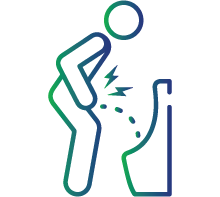
Kidney Stone Analysis by FTIR Test
Kidney Stone Analysis by FTIR Test
Kidney stone analysis is a critical laboratory method for determining the composition of urinary stones, which is required for providing stone-specific treatment. The test also helps doctors identify the causes of stone formation, allowing them to deliver appropriate, customized treatment to prevent stone recurrence.
Fourier transform infrared (FT-IR) spectroscopy is a commonly used method for analyzing kidney stones as part of a basic evaluation of stone diseases. Here, when a urine stone sample is exposed to infrared (IR) light, its unique chemical components absorb specific light intensities, creating a distinctive absorption pattern known as 'fingerprints, which makes the identification of the stone components relatively easy.
What is Kidney Stone Analysis -FITR Used For?
Your doctor can request this test

To identify the nature of kidney stones

To determine what causes the kidney stones

To identify patients with a considerable risk of stone recurrence

To offer stone-specific and individualized treatment

To evaluate the effectiveness of ongoing treatment or preventive measures
Symptoms of Kidney Stones
Symptoms are usually noticeable with larger kidney stones and include one or more of the following

Persistent stomach pain

Severe pain on both sides of the back

Blood in the urine

Difficulty in passing urine

Foul-smelling urine

Fever and chills

Nausea and vomiting
Preparation for Test
Follow the instructions given by your doctor regarding the intake of food and restrictions on medications (if any). Also, drink plenty of fluids for adequate urine collection.
Interpretation of Test Results
The results of FT-IR Kidney stone analysis will be reported as relative percentage content of the various components present in the stone sample.
FAQs
What are kidney stones?
Kidney stones are crystals made of chemicals in larger quantities in the urine due to a combination of genetic, dietary, and lifestyle factors. Kidney stones are of four main types: Calcium, uric acid, cystine, and struvite, and they occur in all sizes. Tiny stones move out of the body in the urine without causing symptoms, but larger stones causes blocks the kidney, ureter, bladder, or urethra, leading to more severe symptoms.
When should stone analysis be performed?
Analysis of urinary stones is recommended as a part of the basic evaluation in all freshly diagnosed cases of stone diseases. It is also performed in cases of early recurrence after interventional therapy and late recurrence after a long stone-free period.
What factors can affect the results of kidney stone analysis by FT-IR?
The results of FT-IR can be impacted by the quality and size of the stone sample. Even the dryness of the sample matters.
What should I expect during kidney stone analysis by FT-IR?
You will be requested to submit your urine sample in a dry plain container, which will be subjected to FT-IR spectroscopic measurement to analyze the composition of stones.
What are the normal values for a kidney stone analysis?
Kidney stone analysis identifies the constituents of urine stone, not the measurement of the material. So, it does not have any normal values.

